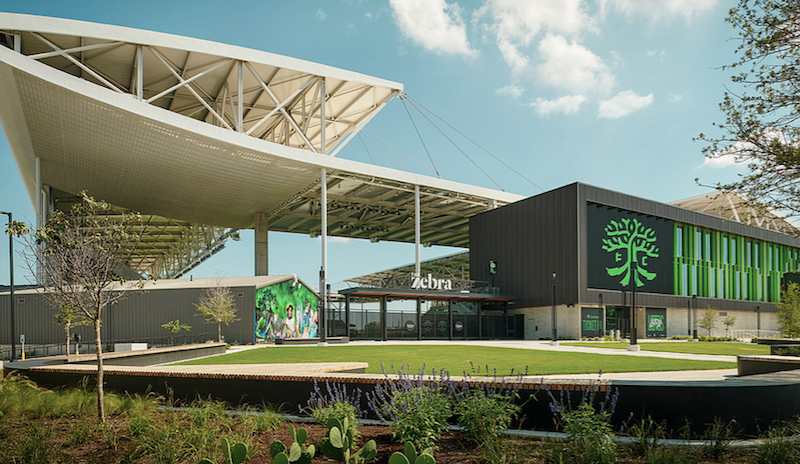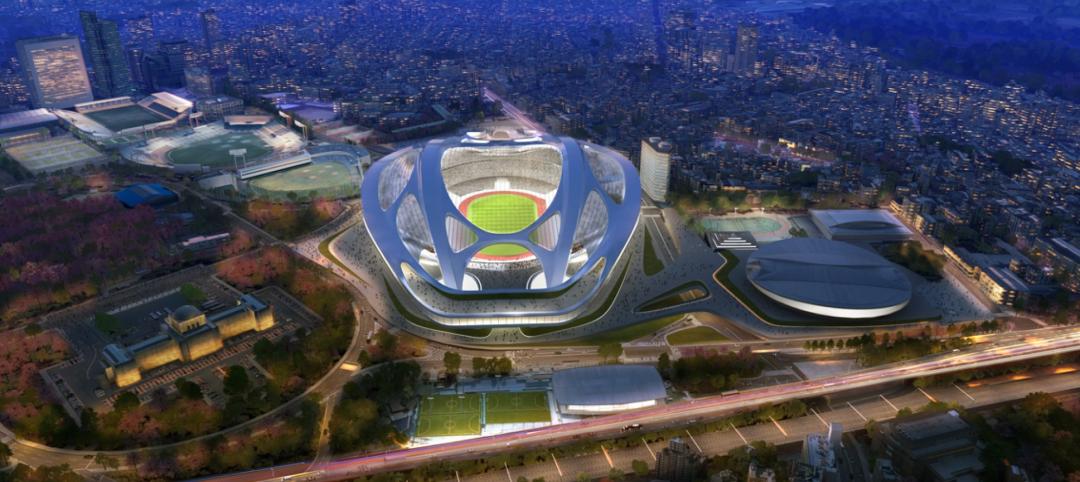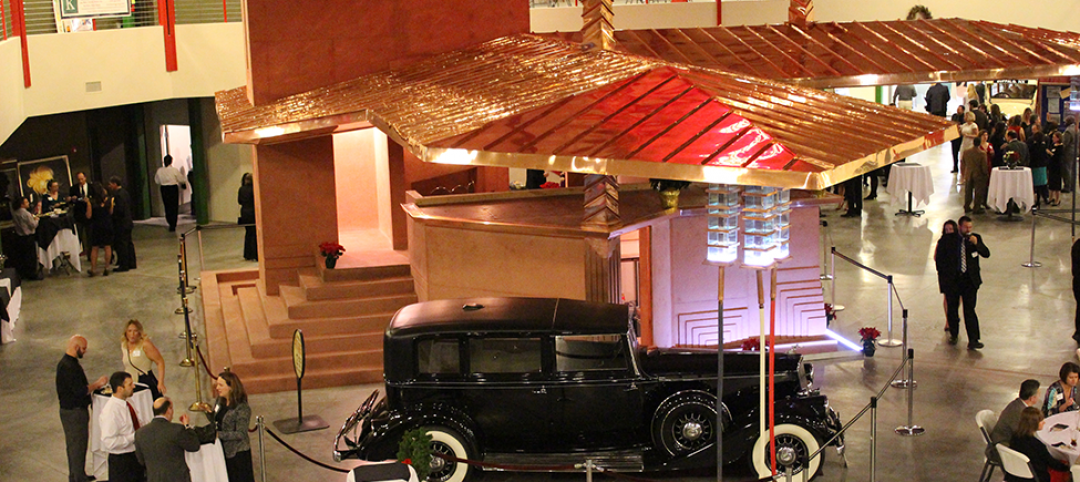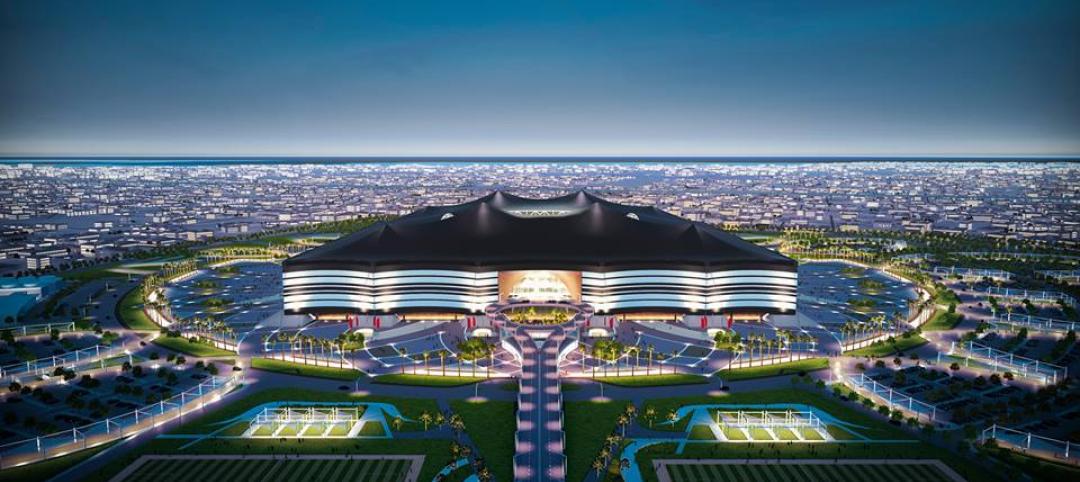Q2 Stadium, a new 20,000-seat stadium for Austin FC, has completed construction. The Gensler-designed project capitalizes on its natural landscape, the city’s cultural heritage, and its tech-forward growth.
The project features one of the largest roofs on a soccer-specific stadium, which will cover every seat, protecting fans from rain and sun. The canopy enclosure features a combination of customized curved metal panel systems on the bullnose, soffit, and edges; and a single-ply roofing on the top side of the canopy. The stadium is also oriented on its site to pull in breezes aided by open corners, an open-air concourse, and breathable mesh fabric seats.
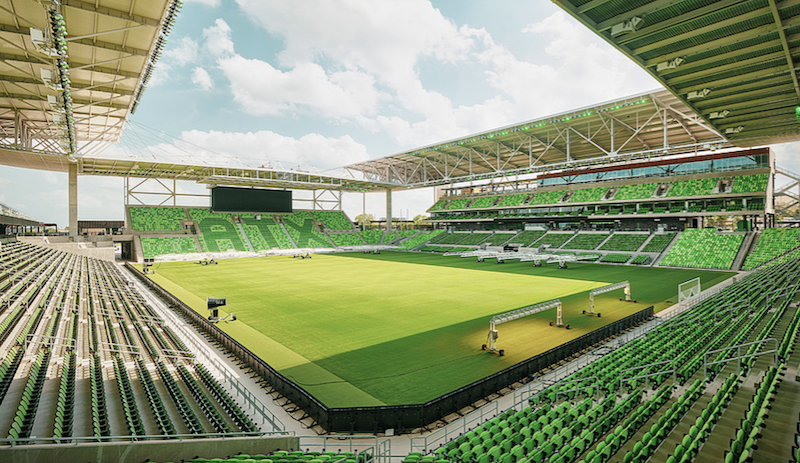
Open concourses and standing areas allow fans to move around and socialize or visit local food vendors. VIP guests can access hospitality-inspired air-conditioned clubs and suites. Multiple outdoor spaces surround Q2 Stadium, including an outdoor amphitheater and a stage for live music. Outdoor spaces are open to the public on non-game days and can host farmer’s markets and concerts.

Q2 Stadium is the first MLS stadium to use Whole Building Life Cycle Analysis (WBLCA) to environmentally optimize the structure and enclosure and reduce embodied carbon. The WBLCA illustrated the environment savings achieved through the use of a cable system to support portions of the roof, as well as optimizations to the concrete mix designs.
In addition to Gensler’s design, the project was delivered with Walter P Moore’s multi-discipline service approach, which includes structural engineering, enclosure engineering, water proofing consulting, construction engineering, and whole building life cycle assessment.
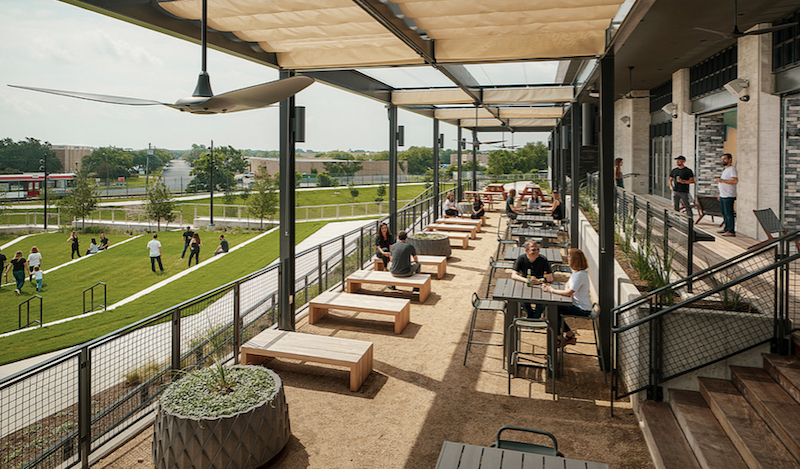
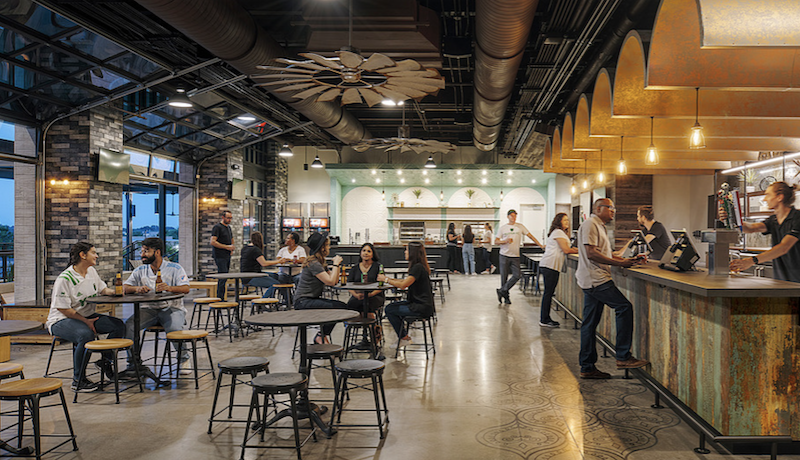
Related Stories
| Jul 18, 2014
Top Architecture Firms [2014 Giants 300 Report]
Gensler, Perkins+Will, NBBJ top Building Design+Construction's 2014 ranking of the largest architecture firms in the United States.
| Jul 18, 2014
2014 Giants 300 Report
Building Design+Construction magazine's annual ranking the nation's largest architecture, engineering, and construction firms in the U.S.
| Jul 17, 2014
A new, vibrant waterfront for the capital
Plans to improve Washington D.C.'s Potomac River waterfront by Maine Ave. have been discussed for years. Finally, The Wharf has started its first phase of construction.
| Jul 8, 2014
Does Zaha Hadid’s Tokyo Olympic Stadium have a design flaw?
After being criticized for the cost and size of her stadium design for the 2020 Olympics in Tokyo, a Japanese architect points out a major design flaw in the stadium that may endanger the spectators.
| Jul 8, 2014
Frank Lloyd Wright's posthumous gas station opens in Buffalo
Eighty-seven years after Frank Lloyd Wright designed an ornamental gas station for the city of Buffalo, the structure has been built and opened to the public—inside an auto museum.
| Jul 7, 2014
7 emerging design trends in brick buildings
From wild architectural shapes to unique color blends and pattern arrangements, these projects demonstrate the design possibilities of brick.
| Jul 7, 2014
A climate-controlled city is Dubai's newest colossal project
To add to Dubai's already impressive portfolio of world's tallest tower and world's largest natural flower garden, Dubai Holding has plans to build the world's largest climate-controlled city.
| Jul 3, 2014
Arthur Ashe Stadium the latest to tap Birdair
The United States Tennis Association (USTA) and ROSSETTI, the architect of record for the Arthur Ashe Stadium, tapped Birdair to supply a 210,000-square-foot, PTFE membrane, retractable roof, expected to be installed by 2016.
| Jul 2, 2014
First Look: Qatar World Cup stadium design references nomadic heritage
Organizers of the Qatar 2022 World Cup, the Supreme Committee for Delivery and Legacy, recently unveiled designs for the second stadium.
| Jul 2, 2014
Emerging trends in commercial flooring
Rectangular tiles, digital graphic applications, the resurgence of terrazzo, and product transparency headline today’s commercial flooring trends.


